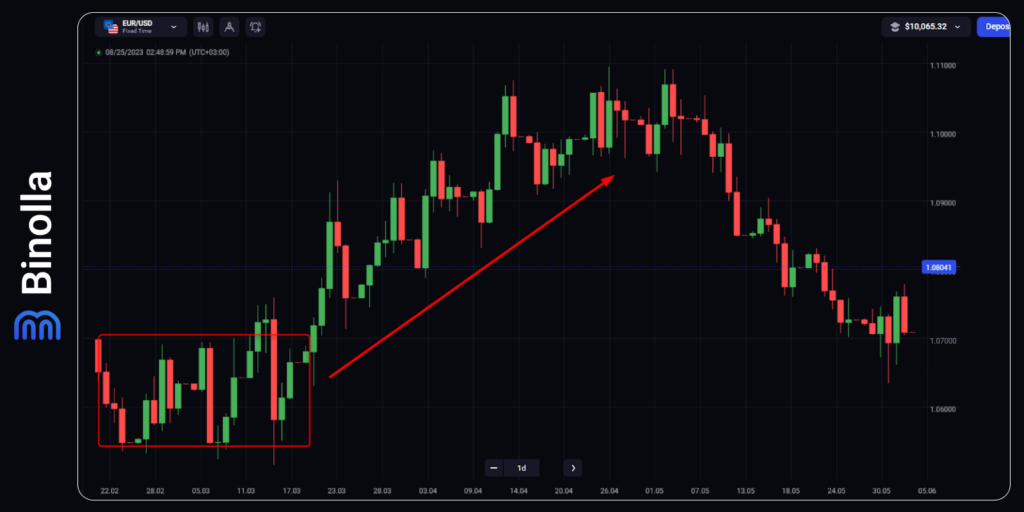What is Market Sentiment and How to Use It in Trading

Trading is not only analyzing charts or finding fundamentals that may drive prices. A large share of traders try to find out the current market sentiment and join the crowd. Understanding where the market is headed now may be very useful, as you can capitalize on the general trend or even catch corrections.
According to Benjamin Graham, the market is voting in the short term, while in the long term, the market is weighing. This is a good description of what the market sentiment is. If the majority of participants are “voting” for the bullish trend to continue, they buy an asset and, therefore, push it higher.
On the other hand, if the majority of market participants vote for the bearish trend, they sell the asset and pin it down. Start trading at Binolla now and apply your market sentiment knowledge to your trading sessions.
Contents
- 1 The Market Sentiment Basics
- 2 Market Sentiment and Emotions
- 3 Using Market Sentiment in Your Trading Routine
- 4 Market Sentiment Indicators
- 5 Experiment with market sentiment in your trading!
- 6 Using Market Sentiment for Digital Options Trading
- 7 Market Sentiment and Forex Trading
- 8 Pros and Cons of Using Market Sentiment in Trading
- 9 Conclusion
- 10 FAQ
The Market Sentiment Basics
Market sentiment is the mood of financial markets and the attitude of traders and investors toward a particular asset. By understanding the current market mood, you can judge whether the market is optimistic or rather pessimistic about a particular stock, currency, cryptocurrency, etc. If you are right in your judgment, you can predict the price movement direction, which is your main goal when you analyze financial markets.
Working with market sentiment is tricky as it can change under various conditions, and you should be ready to change your opinion as well. For instance, bullish or positive market sentiment after hawkish central bank comments may change if economic growth is below expectations. Therefore, relying solely on market sentiment and various derivative indexes is not enough.
In addition, while the market crowd may look in one direction, key participants may invest significant amounts against the crowd, which may cause reversals and be the reason for the opposite trend to develop.
Market sentiment may differ depending on a particular market. While stocks are growing, several currencies and cryptocurrencies may go down. However, you will also find correlations between various markets, which may also be useful.
If we consider precious metals like gold or currencies like USD, they are in great demand in times of uncertainty or during recessions. Stocks, meanwhile, are heavily sold as investors are pessimistic about the stock market in times of recession.
Market Sentiment and Emotions
Markets are normally driven by two main emotions: fear and greed. In times of recession or other negative fundamentals, fear becomes dominant, which leads to great stocks and other asset sell-offs. When macroeconomic indicators are favorable, traders and investors are led by greed, and this is a good time to buy various correlating assets.
How do I understand when either of those emotions is dominant? The easiest way to do it is to watch charts.

The example above shows the price staying in a horizontal range for some time. At a certain point, the price breaks the upper boundary of the range and starts growing. This is where greed became dominant.
Keep in mind that market movements are always based on something. There are always news or fundamental indicators that stay behind each particular process’s momentum. Therefore, it is better not to solely rely on market sentiment but to use it in combination with fundamental or technical analysis.
Using Market Sentiment in Your Trading Routine
One of the easiest ways to use market sentiment is to pay attention to trading volumes. However, you should keep in mind that pure volumes can be seen in stocks and vanilla options, while in Forex, you can use tick volumes only, which is not the best indicator.
When you use volumes, you can see whether the market is interested in a particular asset or not and how this interest changes over time. For instance, when the price is growing, which is confirmed by volumes, you can expect the uptrend to continue. However, once the price growth is not confirmed by volumes anymore, you can expect changes in market sentiment as investors do not add to their positions anymore. Thus, the trend may stop and even reverse in some cases.
Market Sentiment Indicators
Traders can rely on various indicators that demonstrate market sentiment. They help judge the current market mood and understand where the sentiment is headed. With such indicators, you can find overvalued and undervalued assets and use them in trading.
COT (Commitment of Traders)
This indicator is released by the CFTC (Commodity Futures Trading Commission) every week on Fridays. It illustrates the net long and short positions of option traders. With this indicator, you can see the mood of key market participants like hedge funds, financial organizations, etc.
Reading it is very simple. If you see that the indicator shows a shift to bearish moods, then you can expect the asset to go down in the future. The indicator is very useful for Forex traders as it allows you to catch market sentiment for various currencies.
VIX (Volatility Index)
This indicator is also known as the fear index. It is a very useful tool that allows you to focus on historic and current market sentiment. When the volatility is higher, you can expect an asset to go upwards or downwards, while during calm periods, volatility is normally low.
BPI (Bullish Percentage Index)
With this indicator, you can measure how strong the bulls are at a particular moment. It points to the number of stocks that have long signals. BPI fluctuates between 0% and 100%. If 80% of stocks show a buy signal, then the market is considered to be overbought, while when only 20% of stocks show bullish signals, the market is oversold.
Using Market Sentiment for Digital Options Trading
Market sentiment can be a very useful indicator when it comes to buying CFDs for Forex and stocks. However, when it comes to digital options, market sentiment is of a very low value as those contracts are limited in time and mostly short-term. When you look at VIX or COT, you will see market sentiment for the near future, but when it comes to fixed-time options, this information is useless. You are going to open positions for several minutes or several hours, while market sentiment is best for mid-term and even long-term traders.
Market Sentiment and Forex Trading

Forex traders can rely on market sentiment when they look at COT indicators. This tool is very helpful for establishing mid- and long-term trends for various currencies. If market participants are bullish about a particular currency pair, you may focus on other analysis tools to find better entry points and buy it. On the other hand, if the market sentiment is bearish, then you can use various technical analysis tools to find entry points to sell a currency pair.
Keep in mind that market sentiment works better for mid- and long-term trading strategies. When it comes to intraday trading, it is useless.
Pros and Cons of Using Market Sentiment in Trading
While market sentiment may seem very useful and has a lot of true advantages, traders will never forget about the drawbacks of this method. Here are the pros of using market sentiment in trading:
- Trading against the crowd. Market sentiment indicators often show extreme bullish and bearish moods. Traders often use this information to trade against the crowd. However, even if you use this method, it is better to watch technical indicators and fundamentals to make sure that the market is going to reverse;
- Reversal signals. When examining market sentiment, traders can find early signals of price reversals. If the market sentiment changes, you can assume that the price is likely to stop and go in the opposite direction over time;
- Confirmation of technical signals. While technical analysis is a self-sufficient method, you can use market sentiment to confirm signals. This way you will have more confidence in your trading signals and make informed trading decisions;
- You can gain insight into market psychology. Market sentiment is a great way for traders to better understand market psychology and underlying factors that drive price movements.
When it comes to the drawbacks of this method, they are the following:
- Market sentiment is a lagging indicator. This is another reason for digital options traders to avoid this indicator. Market sentiment is lagging as it shows previous market moods that may change at any particular moment. Therefore, to apply it in trading, you should use additional technical indicators to cover this lag with updated information;
- Market sentiment is subjective. What you see when using market sentiment indicators is your own opinion about the market, which may deviate from reality. To make this information more reliable, you should combine information from various sentiment indicators;
- Market sentiment has low predictive power. While using such indicators may be useful, in general, market sentiment can’t predict future price fluctuations. Therefore, you should not solely rely on them and use both technical indicators and fundamentals.
Conclusion
Market sentiment illustrates current market moods that allow traders and investors to make data-driven decisions. When the key market participants are interested in a particular asset, its price goes up, while when the asset suffers from a lack of interest, the price goes down.
One of the most reliable market sentiment indicators is volume. However, there are some other interesting tools that will help you understand whether the market is bullish or bearish. While market sentiment can be considered a reliable method, it has both advantages and disadvantages and requires additional tools for signal confirmation.
FAQ

How Does Market Sentiment Work?
Market sentiment is the attitude of traders and investors towards a particular asset. This is an aggregated indicator that shows a public view of a stock, currency, or other financial instrument.
What Causes Market Sentiment?
Market mood and sentiment are caused mostly by fundamentals such as central bank decisions, comments, macroeconomic data and various political and economic news.
Why Is Market Sentiment Important in Trading?
The importance of market sentiment is hard to overestimate. Being an indicator of current investors’ and traders’ moods, it allows market participants of all types to understand whether the key investors are bullish or bearish about a particular asset.
What Is a Positive Market Sentiment?
When market sentiment is positive, it means that the current trend is bullish. Negative market sentiment, on the other hand, refers to a bearish trend.







